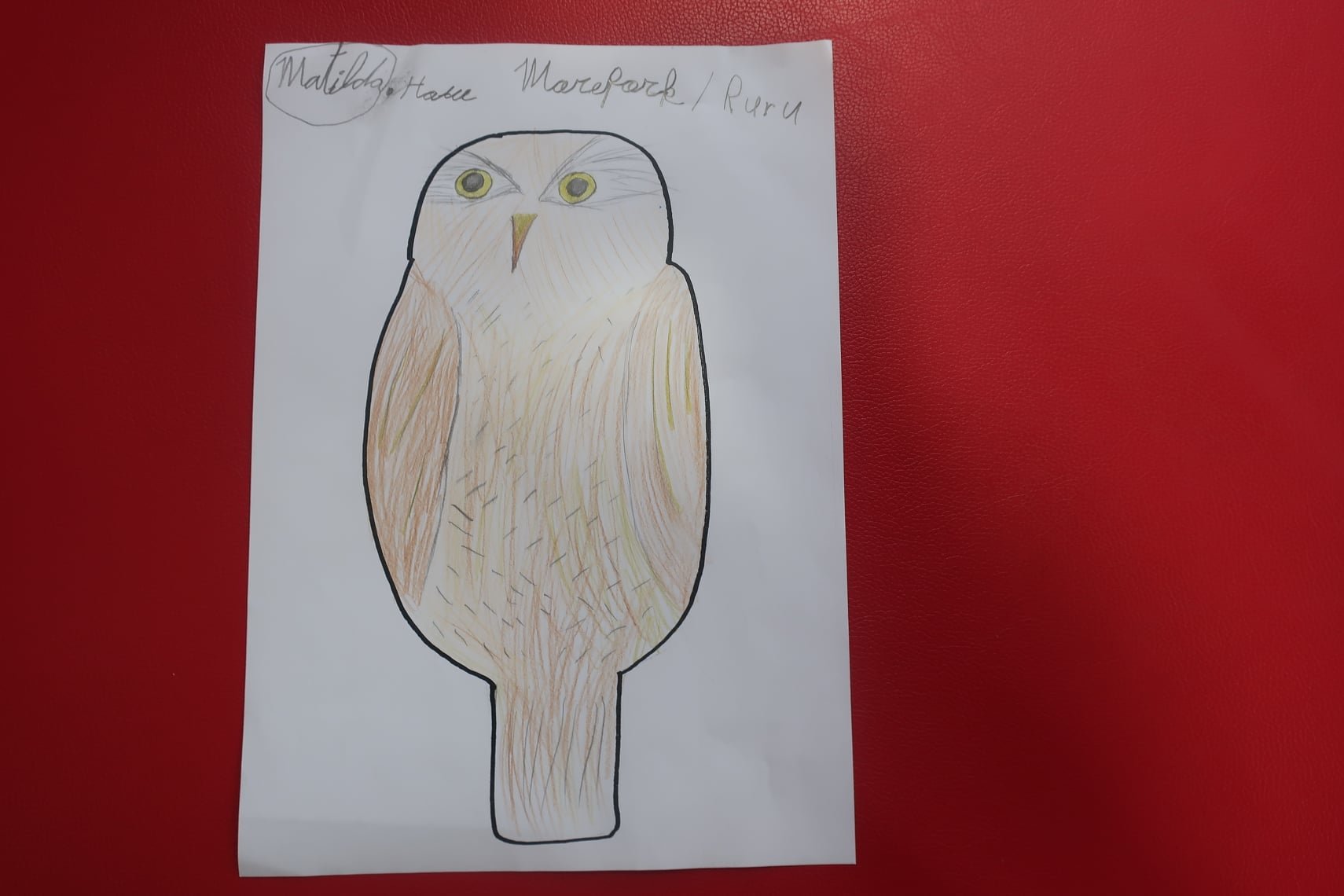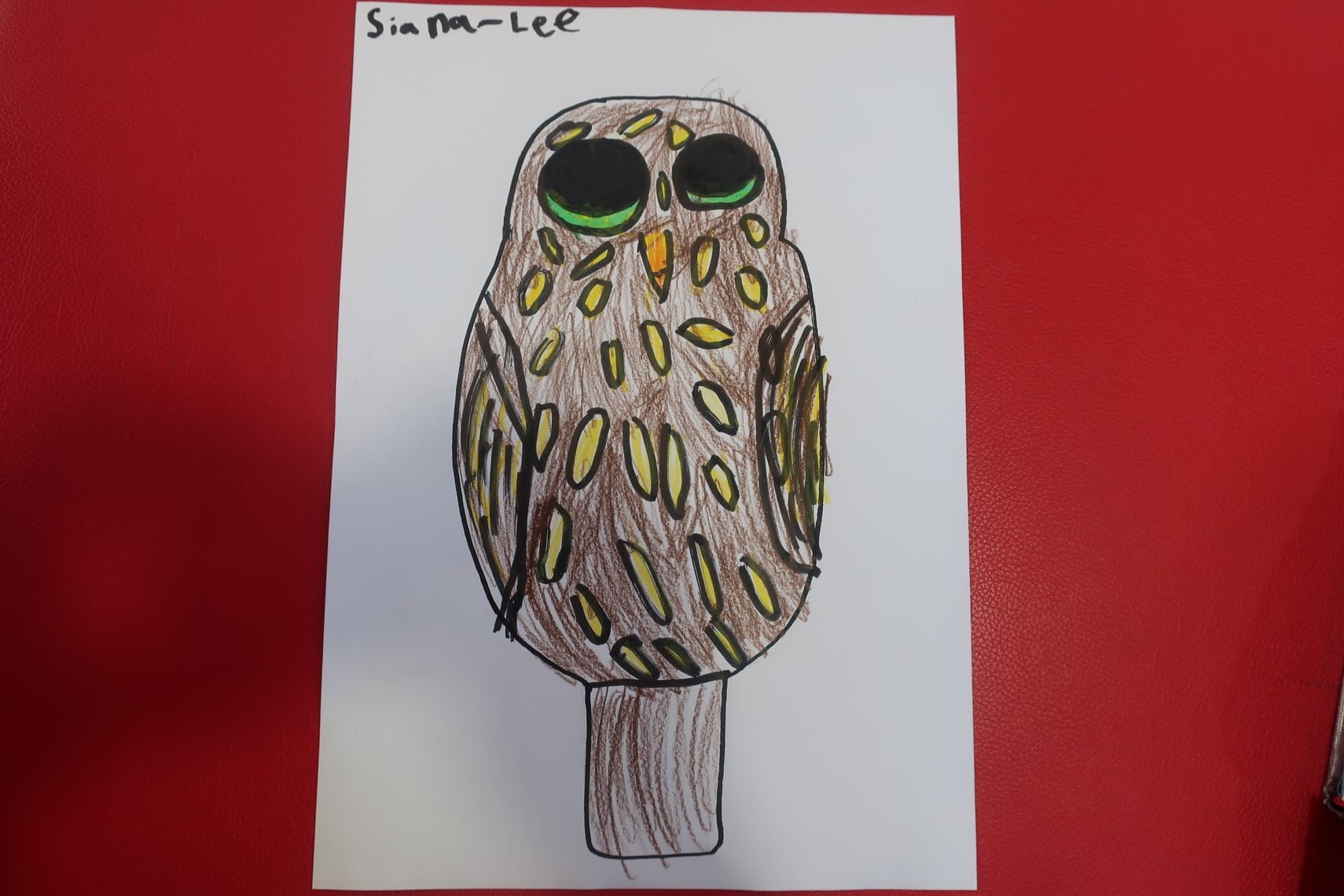A Visit from Ruru: owl inspiration

Ruru in my garden
A few weeks ago I heard a commotion in the garden - the blackbirds were complaining, it sounded like they were giving another bird a good telling off. I was curious to see what all the fuss was about. That's when I saw a ruru sitting on a branch having its daytime nap. The owl didn't seem at all bothered by the blackbirds and eventually they gave up and moved into another part of the garden.
I've heard ruru or morepork at night - their distinctive call echoes in the gully nearby - but I never imagined they might be hunting in our garden. These owls hunt wētā, moths, cicadas, small birds such as silver eyes, rats and mice. They need large trees with holes or cavities for their nests. We have some large trees but I don't know if any would be large enough for them to nest in.
There's something about their large eyes and piercing stare that is slightly unnerving, even when they are sleepy like this one. Meeting this ruru inspired me to write a little haiku.
Eye to eye
who will blink first
the owl or I?

Writers in Schools visit to Crofton Downs School, Photo: Justin Potter
I enjoy talking with children about them on my school visits using the pictures on pages 6 and 7 of In the Bush. They love my Tumbleweed Tees ruru T-shirt. Ruru are a bird that really grab children's imagination. Maybe it's the fact that they are nocturnal or maybe it's their wonderful haunting calls.
Do you hear "ruuu - ruuu" or "more-pork"? The sound we hear is likely to be the one we have been told or expect to hear. I used to hear "more-pork" but now I use the Māori name I am more likely to hear "ruuu - ruuu". Because it is found in Australia, Norfolk Island and New Guinea as well as New Zealand it has many different names. In New Zealand it's called ruru or morepork, in Australia it's called boobook or mopoke. All these names reflect how different people interpret its call.

I often show children this page from my Nature Journal, to demonstrate how they can record what they see in both pictures and words, and use these ideas later in their writing.
Ruru make a good writing or poetry topic. At Porirua Library workshop in their 2021 Summer Programme I introduced children to the idea of concrete poetry - that’s poetry written in the shape of the poem’s subject. After brainstorming what we knew about different native birds, I gave the children shapes of the birds and they could either write a poem or colour it in, making this a great activity for mixed ages. Unsurprisingly ruru was one of the most popular.
Ruru related activities:
Ruru outline to download
Papier mache animals https://www.gilliancandler.co.nz/discovernatureblog/2021/01/making-papier-mache-animals.html
Nature journal template https://www.gilliancandler.co.nz/discovernatureblog/2018/07/create-your-own-nature-journal-for.html
Further information about ruru:
https://www.doc.govt.nz/nature/native-animals/birds/birds-a-z/morepork-ruru/
https://www.nzbirdsonline.org.nz/species/morepork
https://www.wingspan.co.nz/birds_of_prey_new_zealand_morepork_native_owl.html



